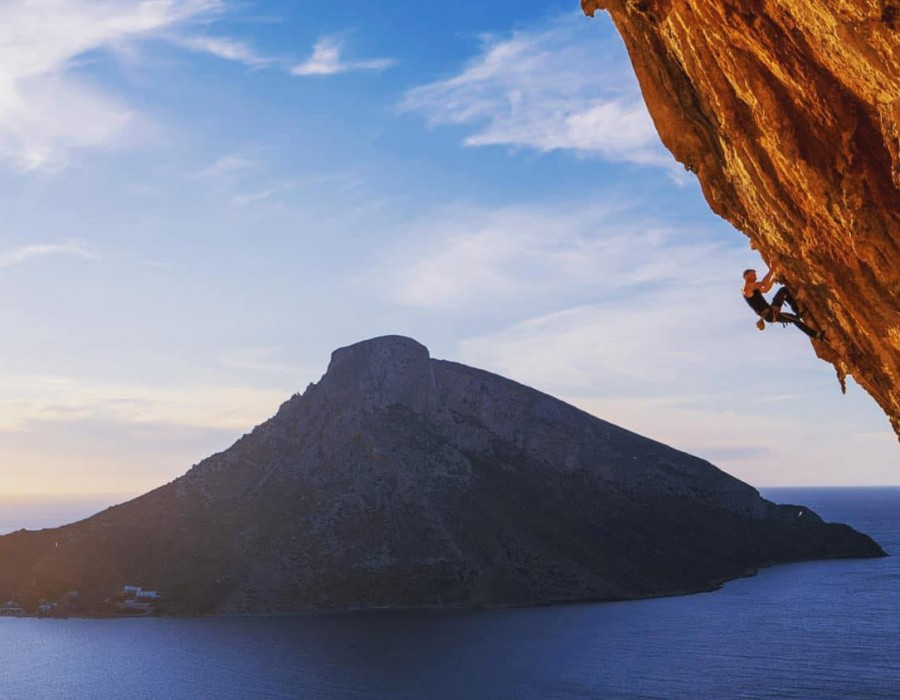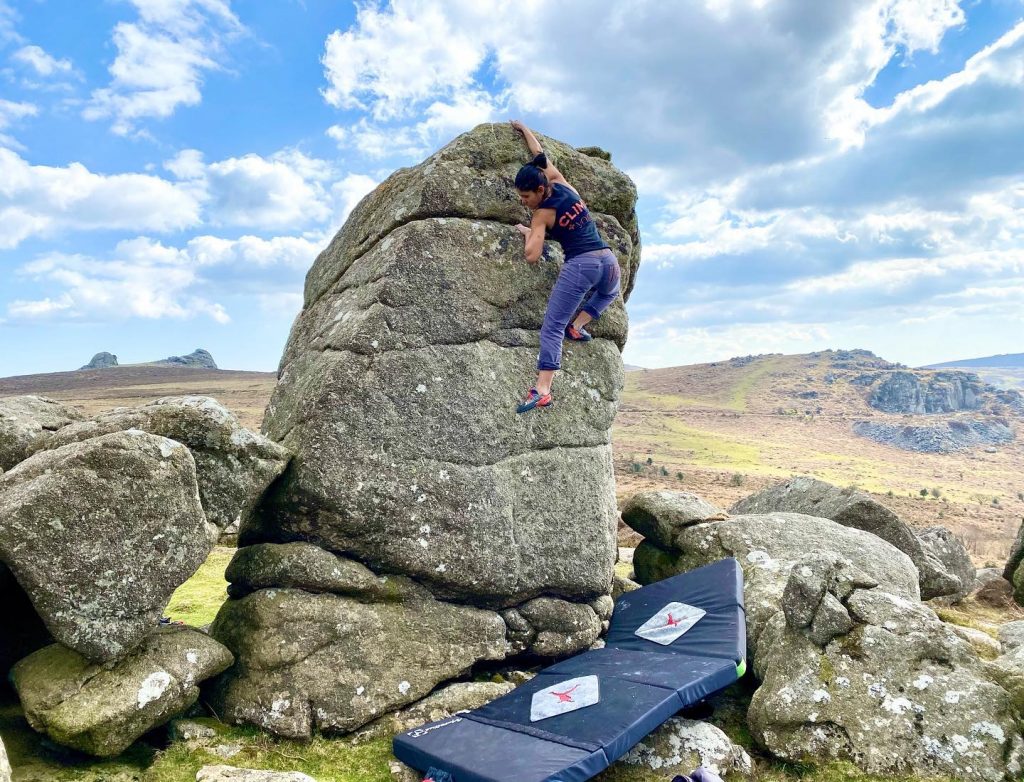Fitness and Performance
How to prevent common climbing injuries

As elite climber Wolfgang Gullich once said, “getting strong is easy, getting strong without getting injured is hard.” Especially when you’ve patiently waited through a long winter lockdown to get out and enjoy a summer on the rock!
It’s time to make the most of the weather (when the good old British summer decides to smile on us), crush some new routes and even push your grade. But like any other sport, an increase in intense physical activity is accompanied by a higher risk of injury. And if you do get injured, the very first step to recovery is often to stop climbing. Exactly what you don’t want to hear! That’s why we asked Bodyset Senior Physiotherapist, James Lee and Climbing Trainer, Natalie Fenech from Nailz Training to share their top tips on how to prevent common climbing injuries…
Finger Pulley Tears
Every finger contains tendons which are held in place by 5 pulleys. These pulleys prevent the tendon from moving away (bowstringing) from the bone when you move your hands. Big dynamic moves, finger pockets and in particular, crimps (gripping onto small and narrow holds) can put a large amount of strain on these pulleys and overload the tendons – resulting in a finger pulley tear.
As soon as a finger pulley injury occurs, you’ll feel a sharp pain at the site of the injury – often at the base of your finger. You might even hear a popping sound, followed by swelling of the finger, stiffness when bending the finger, and pain when crimping and gripping.
Taking anti-inflammatories and applying ice can be useful immediate actions to take, but the best thing you can do to start your recovery is to stop climbing. This period of time is dependent on the severity of the tear and if you feel that your finger is not healing, get in touch with a physiotherapist for an official diagnosis and treatment plan.
When you feel like you can start climbing without pain, then try to climb on jugs and other bigger handholds until you’re confident that you have fully healed. Bear in mind, finger pulleys can take a while to heal, which can be tough when you see your friends progressing on the wall. Try to be patient – the longer your finger has to heal, the less likely you’ll be to repeat the same injury.
Prevention
1. Child’s Pose Finger Lifts
Strengthening the extensors in the back of the finger helps to balance out the forces acting on the pulleys in the front of the finger. Sit in Child’s Pose, with your hands directly under your shoulders, pressing into the ground with your fingertips. Spread your fingers wide and lift each individual finger off the ground for 1-2 seconds. Try to complete 3 sets of 5 repetitions on each finger, on both hands.
2. Hang boarding
Hang boarding at home or at the gym is a great way to build finger strength. But it’s important to start slow. If you’re new to climbing, then a tension ball or handgrip can be a safer option to start building strength before moving onto a hang board. “Hang boarding can be tedious, but it’s worth it. I use my Beastmaker three times a week, particularly throughout the winter. I’ve experienced a finger pulley tear before, and I don’t want a repeat!” Said Nat.
3. Good technique
Good footwork, strong body positioning and core engagement are really important and using your entire body to climb where possible will reduce the stress on your hands and fingers. It’s helpful to try alternative grips where possible, too – (perhaps) you can use a half crimp or an open hand grip more frequently than clamping down into a full crimp.
4. H Taping
If you have experienced a recent finger injury and feel that you are ready to return to climbing, then taping can be a helpful preventative measure to take. H-taping your fingers is more effective than traditional circumferential taping. To H-tape, tear a four-inch piece of athletic tape from the full width of the roll. Then, tear from each end to leave a ½” bridge connecting the two ends. Place the middle section along the palmer side of the joint in the middle of the finger. Wrap the section of the finger closer to the hand first; bend the taped joint to 30 degrees and wrap the other section of the finger.
Rotator cuff tears
A rotator cuff tear is a very common shoulder injury among climbers. Naturally, the sport requires climbers to spend a lot of time with arms extended above their shoulders, which places stress on the tendons. In order to avoid injury, the muscles in your shoulders (notably your rotator cuff) need to be strong with good muscular endurance.
Pain and aching in your upper arms and shoulders when you lift your arms above your head or a notable weakness are indicators of a minor tear. Ice and rest are the first steps to recovery, but more serious tears often require surgery or a physiotherapy treatment plan in order to repair the shoulder, regain strength, recover full range of movement and prevent further injury. A structured and thorough assessment from a physiotherapist is a good place to start.
“It’s quite common for new and intermediate climbers to focus on grip strength and climbing as their main targets in strength training. The more you climb, the stronger you will get. However, it won’t target specific rotator cuff muscle strength through the full range of motion required to reduce the risk of injury. It’s imperative that climbers add specific rotator cuff strengthening to supplement their training.” James Lee, Bodyset. Senior Physiotherapist.
Prevention
1. Wall clocks
Wrap a resistance band around your wrists and turn your hands into fists. Press your fists gently into a wall with your wrists facing outwards onto the band. Keep your elbows straight and reach out towards 3 o’clock, 1 o’clock, 5 o’clock and 6 o’clock. Repeat with the opposite arm for 9 o’clock, 11 o’clock, 7 o’clock and 6 o’clock. Perform reaches for 20 to 60 seconds and repeat for 3-5 sets.
2. Looped band reaches
Wrap a resistance band around your wrists and sit into a mini squat. Press outwards on the band and raise the arms overhead. Perform reaches for 20 to 60 seconds, lower and repeat for 3-5 sets.
3. Abducted External Rotation
Start by lying on your front on a raised surface, and your arm held perpendicular with a 90° bend. Begin with your fist facing the ground holding a weight (the weight is dependant on your strength). Smoothly lift the weight up to head height, then slowly lower it back down. Note, if your body shakes, then the weight you’ve chosen is too heavy. The shaking indicates that the rotator cuff is too weak for the weight you have chosen, and other muscles are stepping in to compensate. It’s important here to maintain form and isolate the rotator cuff. Complete 20 reps on each side and repeat for 3 sets.

Sandra Berlin, Climb & Yoga
Climber’s elbow
Climber’s elbow is tendinosis of the medial and/or lateral elbow tendons – a condition that can develop slowly over time as a result of a frequent and strenuous climbing schedule that subjects your tendons to stress and strain before they are fully recuperated. The condition is the result of micro-tears accumulating or inflammation of the tendon over weeks or months. It most commonly develops as a result of the muscle imbalance in the forearm.
Go-to first step treatments such as rest and ice don’t tend to result in any long-term improvement.
Prevention
1. Reverse wrist curls
This exercise targets the lateral elbow tendons. While seated, rest your forearm on your thigh, desk or armchair so that your hand faces palm down and overhangs your knee. Grip a small dumbbell, and begin with a straight wrist position. Curl the dumbbell upward until the hand is fully extended. Hold this top position for one second, then lower the dumbbell. Repeat 15 slow reps and avoid lowering the dumbbell below horizontal. Repeat on each hand for 5 sets.
2. Forearm pronators
This exercise targets the medial elbow tendons. Again, while seated, rest your forearm on your thigh, desk or armchair with your palm facing up. Firmly grip a hammer of metal pole parallel to the floor. Turn your hand inward and lift the hammer to a vertical position. Pause, and then slowly lower back it back down. Repeat 15 slow reps and avoid lowering the hammer below horizontal. Repeat on each hand for 5 sets.
3. Mobilisation and stretching
Stand up and support yourself with one hand on a table, palm down. Fingers spread wide, bend your elbow about 45 degrees and apply pressure with your upper body to stretch your fingers, wrist and forearms. Maintain the stretch for 10 seconds and repeat 3 times on each hand.
Further tips to help prevent climbing injuries
1. Warm-up
Jumping on your project straight away is the faster route to injury. It’s important to warm up properly across all the major muscle groups.
2. Stretch
Dynamic stretching is the most effective method of stretching prior to an activity. It increases the blood flow to your muscles, tendons and joints, and can dramatically help prevent injury. Try a range of dynamic stretches for at least ten minutes prior to climbing on the wall.
3. Technique
Poor technique can lead to many common climbing injuries. Consult a trainer for advice on how to improve your climbing form and design a training plan suitable for your grade.
4. Listen to your body
Climbers are often so committed to a goal that they can sometimes ignore the warning signs. If you listen to your body and stop climbing when something starts to hurt, you’ll have a much better chance of recovering before a serious injury happens.
5. Take rest days
Rest days are just as important as training days for allowing your muscles to recover and grow stronger. Although recovery time is highly variable for everyone, many climbers need at least 48 hours to fully recover from a challenging session.
“As climbers, we’re often pretty obsessive about reaching new goals and find it hard to take rest days. But it’s one of the most important parts of training. Take the time to rest and rehabilitate – you’ll have more power to climb harder in the next session!” Natalie.
